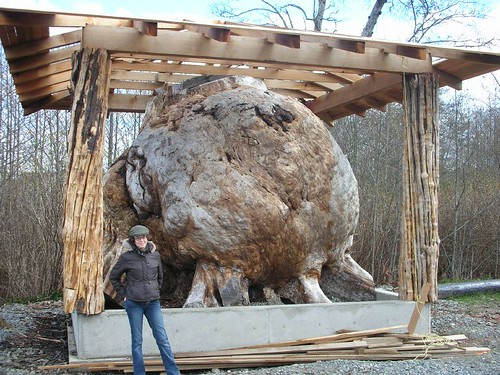Lately it seems that Cambie St has been garnering a lot of attention in local alternative media. The new zine Tooth and Dagger ran a story about the Tomato Cafe's recent departure from Cambie St, and Fairview MP Gregor Robertson’s bill to refund property taxes to the owners of small businesses along Cambie. Yesterday, the “crowd powered” news site nowpublic used some of my Cambie St. photos for an article called “The Village a Train Ate”. The article features an interview with the owners of the Don-Don Noodle Café, who have been forced by a 40 % reduction in revenues to close their shop permanently.
After reading the second article, my mood was woeful. This is the first I had heard of my pending deprivation from the Don Don Noodle House’s wonderful yakisoba and dumplings. In addition to being economic entities, small businesses play a vital role in sustaining the cultural heart of their community. Many shops and restaurants are part community centre; they provide a gathering place for locals and an identity for the district. It was on the bulletin board of the Don Don Noodle House some months ago that I first found out about the campaign to restore trolley bus service on Cambie, for example. There are Starbucks in every district of Vancouver, but only Cambie had a Don Don Noodle House. I remember a conversation with the owner Simon Kim in the summer of 2005, when everyone on Cambie was beginning to realize the extent of the coming chaos. At that time, he had just signed a five-year lease on his restaurant space before learning that the construction would be cut-and-cover. If he had known of the impending disruption, he said, he would have moved his business to a new location.
Economy and culture are two theoretical perspectives from which this blog will examine the changing faces of Cambie St, drawing on the experiences of people who live and work in the neighbourhood. As the two articles referenced above show, the economic picture for many on Cambie St. is presently bleak. The odds are high that before the worst is over, more small businesses will go under. This period of hardship seems to increase the determination of some citizens and business owners to get through the disruption and uncertainty. As the photo at the start of this entry shows, a community member has organized a community art event right on the street, at an intersection where a large paved area remains sandwiched between construction zones. Local businesses such as Hazel & Co and Choices are helping to spread the word by advertising the event in their shop windows. Unfortunately, I’ll be out of town for this week’s outdoor art party, but I hope it is a raging success.




